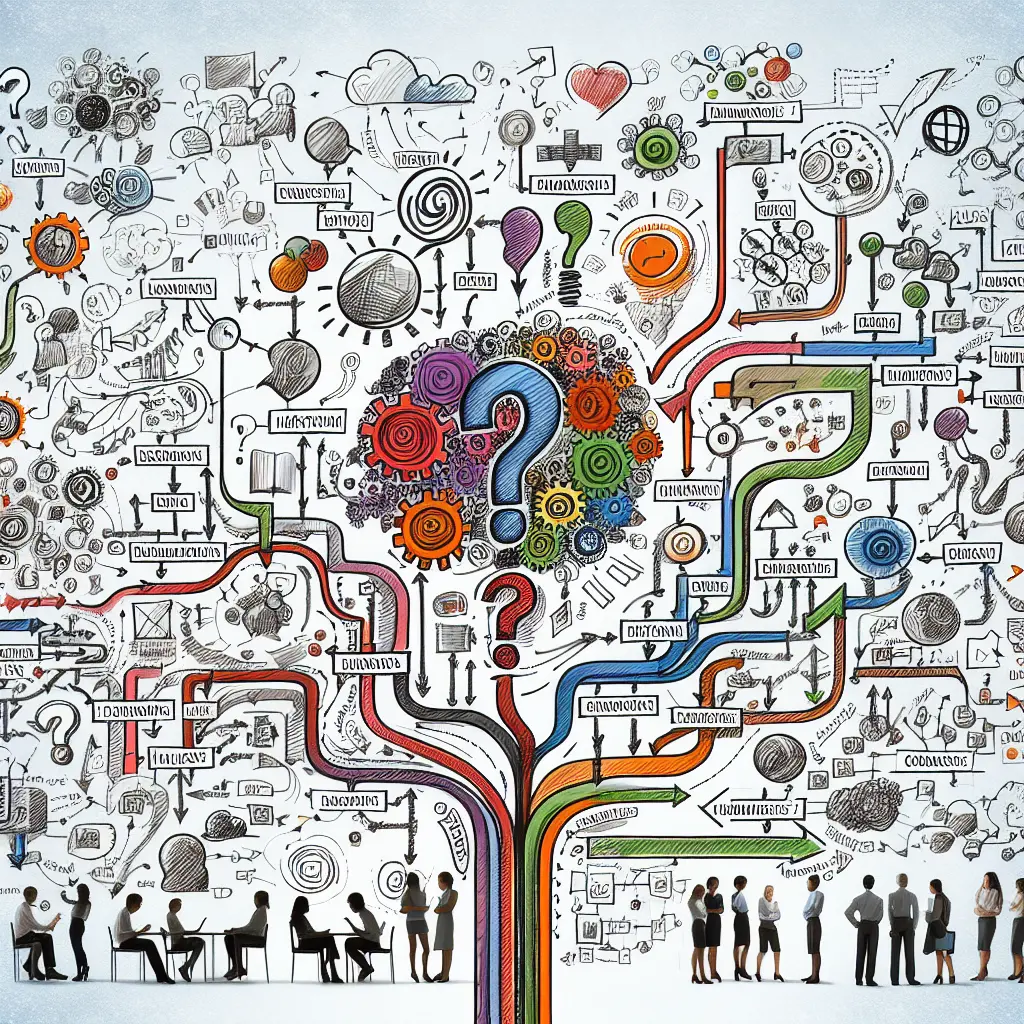In the fast-paced world of media, where creative decision making is crucial, mind mapping techniques have emerged as a powerful tool for enhancing decision making skills. Media professionals often face complex decisions that require innovative solutions, and mind mapping offers a visual decision making tool that simplifies these processes. By integrating mind mapping for media professionals into daily workflows, individuals can enhance decision making abilities and navigate the intricacies of media strategy with ease. These cognitive decision making tools not only improve decision skills with mind maps but also foster creativity, helping professionals think outside the box.
The benefits of mind mapping are manifold. From media planning with mind maps to using advanced mind mapping software for media projects, these visual aids streamline decision making frameworks and bolster cognitive clarity. As media industry mind mapping gains traction, professionals are discovering its potential to transform media project management and strategic planning. By employing effective mind mapping strategies, individuals can unravel complex decisions and forge clear paths forward.
Mind maps for complex decisions serve as cognitive aids that enhance creativity with mind mapping, offering fresh perspectives on seemingly intractable challenges. The use of innovative mind mapping methods enables media professionals to harness their full creative potential, ensuring that every decision is backed by thorough analysis and strategic foresight. As we delve deeper into how these tools revolutionize decision making processes, we'll explore practical applications and software solutions that can elevate your media strategy to new heights.
Media professionals are often tasked with making decisions that can make or break a project. Mind mapping for media professionals provides a structured yet flexible approach to decision making that encourages creativity and clarity. By visually organizing information and ideas, mind maps facilitate a comprehensive understanding of media strategies and reveal insights that might otherwise be overlooked.
In recent years, the use of mind maps for complex decisions has gained momentum in media planning and strategy development. This is particularly evident in media project management, where the ability to see the big picture and understand intricate relationships between different elements is crucial.
Mind Mapping Techniques for Enhancing Decision Making Skills
A notable example of effective mind mapping strategies in action comes from a leading media agency that adopted mind mapping software to streamline its media planning processes. By utilizing visual decision making tools, the agency was able to enhance creativity with mind mapping, resulting in innovative campaign strategies that outperformed traditional methods. This shift not only improved decision skills with mind maps but also increased team collaboration and efficiency.
Mind mapping techniques extend beyond basic brainstorming to include innovative methods such as digital mind mapping software. These tools offer features like real-time collaboration, integration with other digital platforms, and advanced visualization capabilities. Such features are especially beneficial in media project management, where timely and effective decision making is critical.
One of the most promising developments in this area is the integration of artificial intelligence (AI) with mind mapping software. AI-enhanced mind maps can suggest potential pathways and highlight key considerations based on historical data and predictive analytics. This advancement aligns with findings from a recent study on the application of AI in decision making, which underscores the importance of context-aware technology in improving decision outcomes (source).
The cognitive decision making tools provided by mind mapping are invaluable for media professionals seeking to enhance decision making processes. By externalizing thoughts and visualizing connections between ideas, mind maps foster deeper understanding and enable more informed decisions. This visual representation reduces cognitive load, allowing professionals to focus on strategic thinking rather than being bogged down by details.
Mind Mapping Benefits: A Cognitive Advantage
Moreover, mind maps serve as powerful cognitive aids that encourage divergent thinking—an essential component of creative decision making. By breaking down complex problems into manageable parts, media professionals can explore various scenarios and identify innovative solutions that might not be immediately apparent.
For those looking to integrate mind mapping into their workflows, there are numerous tools available that cater specifically to the needs of media professionals. These tools range from simple digital platforms to sophisticated mind mapping software for media projects. Some popular options include XMind, MindMeister, and Coggle, each offering unique features that support media strategy mind maps and decision making frameworks.
When selecting a mind mapping tool, it's important to consider factors such as ease of use, collaborative capabilities, and integration with other media tools. For example, a platform that allows seamless integration with project management software can significantly enhance workflow efficiency and team collaboration.
As media industry mind mapping continues to evolve, professionals are discovering new ways to leverage these visual aids for strategic advantage. The key to successful implementation lies in understanding the unique needs of each project and tailoring mind mapping techniques accordingly.
For instance, a recent scoping review highlighted the effectiveness of educational interventions in promoting positive attitudes towards science among middle school students (source). This research underscores the importance of context-specific applications, which can be directly applied to media planning with mind maps by considering audience insights and market dynamics.






Leave a Comment